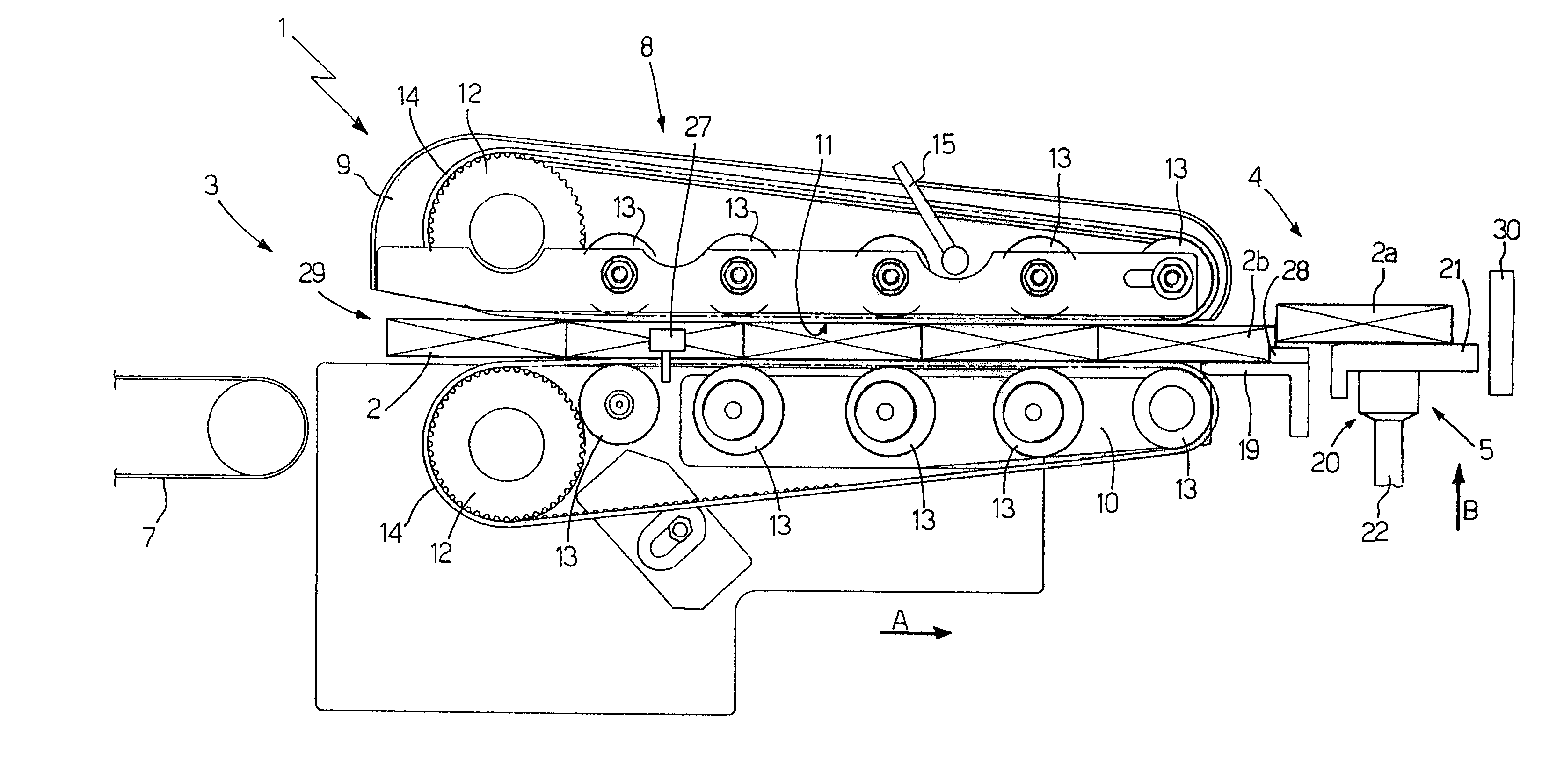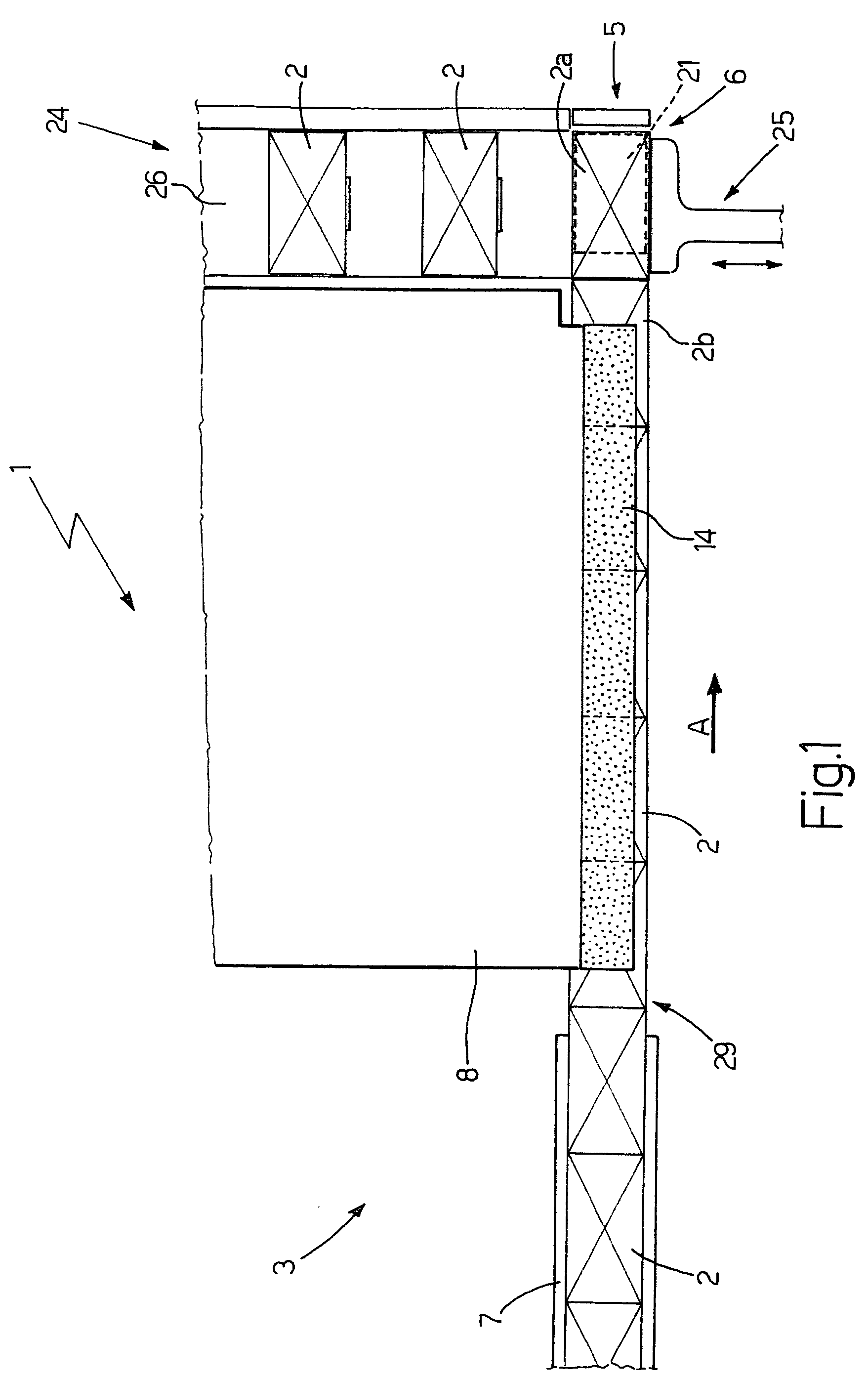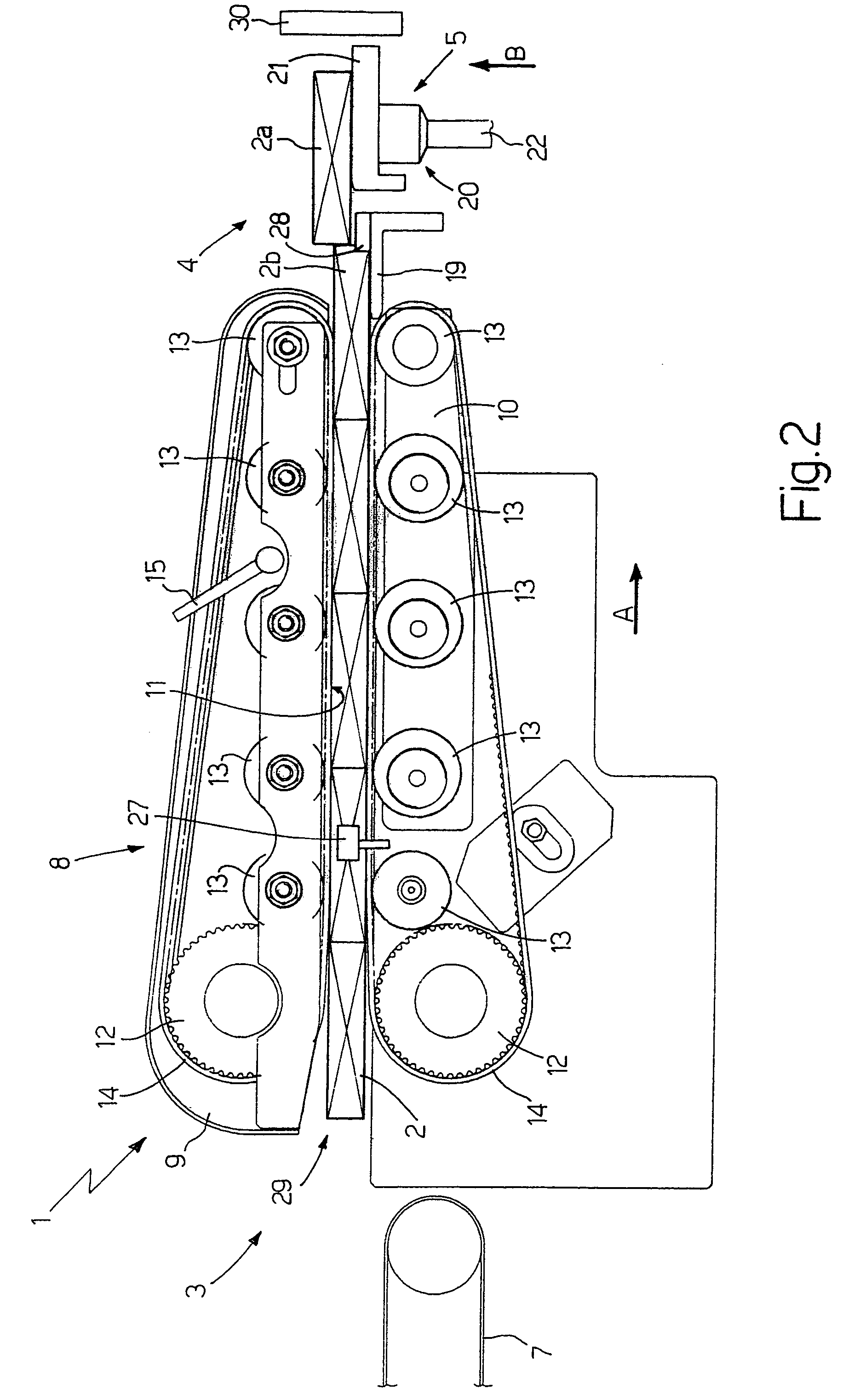Method and machine for transferring packets
- Summary
- Abstract
- Description
- Claims
- Application Information
AI Technical Summary
Benefits of technology
Problems solved by technology
Method used
Image
Examples
Embodiment Construction
[0014]Number 1 in FIG. 1 indicates as a whole a machine for transferring substantially parallelepiped-shaped packets 2, in particular packets of cigarettes, from a known packing machine not shown.
[0015]With reference to FIGS. 1, 2 and 3, machine 1 comprises a feed unit 3 for feeding packets 2 horizontally in a feed direction A to a transfer station 4; and a transfer unit 5 for transferring at least one packet 2a, located at transfer station 4, to an output station 6 in a transfer direction B substantially perpendicular to feed direction A.
[0016]Feed unit 3 comprises a conveyor belt 7 which feeds packets 2 to a further two-belt conveyor 8. Conveyor 8 feeds the packets to transfer station 4, is located downstream from conveyor belt 7, and comprises a top conveying assembly 9 and a bottom conveying assembly 10 defining, in between, a feed channel 11 for packets 2.
[0017]Each conveying assembly 9, 10 comprises a drive pulley 12, and a number of—in the example shown, five—idle pulleys 13;...
PUM
 Login to View More
Login to View More Abstract
Description
Claims
Application Information
 Login to View More
Login to View More - R&D
- Intellectual Property
- Life Sciences
- Materials
- Tech Scout
- Unparalleled Data Quality
- Higher Quality Content
- 60% Fewer Hallucinations
Browse by: Latest US Patents, China's latest patents, Technical Efficacy Thesaurus, Application Domain, Technology Topic, Popular Technical Reports.
© 2025 PatSnap. All rights reserved.Legal|Privacy policy|Modern Slavery Act Transparency Statement|Sitemap|About US| Contact US: help@patsnap.com



